Franco Angeli, whose real name was Giuseppe (Rome, 1935 - 1988), a self-taught painter, was one of the main exponents of the School of Piazza del Popolo, along with, among others, Mario Schifano and Tano Festa. Angeli’s art is characterized by the presence of material inserts such as gauze and veils, which cover the surface of the canvas and make the subject barely visible, as if it were a distant memory in time. Gradually, Angeli’s work has moved beyond the ’informal from which he was initially inspired to more figurative outcomes.
Symbols recur in his works that are repeated in several variations. These symbols are both related to regimes, as an important part of Angeli’s life and work is linked to his political commitment, and to the city of Rome, in which the artist has always lived.
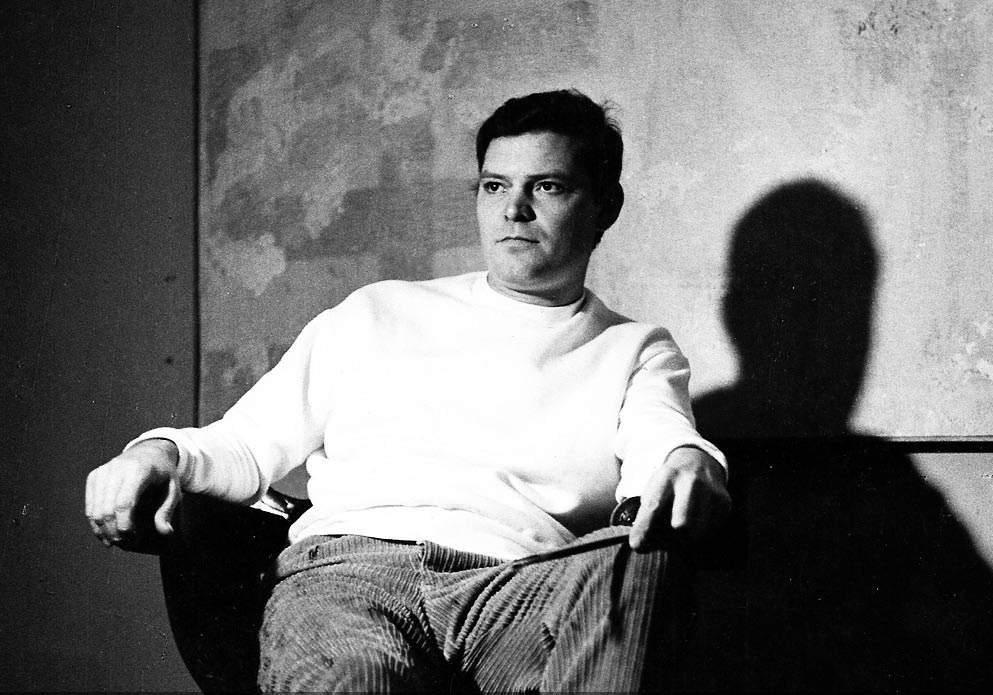
Franco Angeli was born in the San Lorenzo neighborhood of Rome on May 14, 1935. The artist used the surname of his mother, Erminia Angeli, and not that of his father Gennaro Gennarini, and so did his brothers Omero and Otello. Angeli began working as a child in order to financially support his struggling family due to his mother’s illness. Among the various jobs he undertook was that of an upholsterer, and through this experience he became an expert in textiles and their uses, which he later included as details in some of his works. He began painting in 1957, the same year he was called for military service in Orvieto. He came into contact with the sculptor Edgardo Mannucci, a friend of Alberto Burri, and began to try his hand at painting in his studio. He thus approachedabstract-material and informal art, which struck him because of his tendency to use different forms and materials.
Angeli was very politically active, and this was a fundamental aspect of his life and art. He joined the Communist Party, specifically in the Campo Marzio section, and on this occasion he met the artists Tano Festa and Mario Schifano. However, following the invasion of Hungary by the former USSR, Angeli departed from the party to draw closer to the extra-parliamentary bangs of the left and the pro-Mao Tze-Tung movements. He later demonstrated several times against the Vietnam War between 1969 and 1970. In 1959 he exhibited his works publicly for the first time, at a group show organized at La Salita gallery, together with Tano Festa and others. In the same year he was featured in the magazine Azimuth, founded by Piero Manzoni and Enrico Castellani, along with other artists such as Jasper Johns, Yves Klein, Robert Rauschenberg and Mimmo Rotella. He also began to frequent the Rosati bar at that time, where he met Renato Guttuso, Pino Pascali, Jannis Kounellis, and Fabio Mauri. He organized his first solo exhibition in 1960, also at La Salita gallery, and won an encouragement award from the Ministry of Education. Also during the same period, he participated in a short film signed by Mario Carbone, entitled Inquietudine, in which he explained his painting technique.
For a period, Angeli was in Spoleto, and here he met the famous writer, activist and television personality Marina Ripa di Meana (whose first name was Maria Elide Punturieri), with whom he established a romantic relationship that turned out to be rather troubled. In the same years, Angeli and the other artists of the Piazza del Popolo group earned the name “cursed artists” for their frequent use of alcohol and drugs.
In the 1970s he continued his artistic and exhibition activities, and in the meantime he met Livia Lancellotti, who became his life partner and with whom he had daughter Maria in 1976. Angeli died in Rome on November 12, 1988.
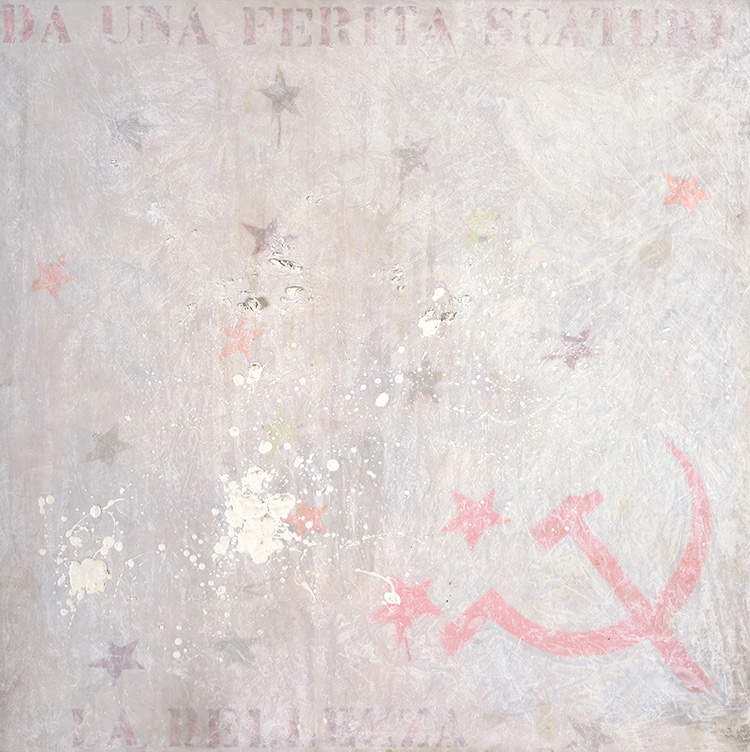
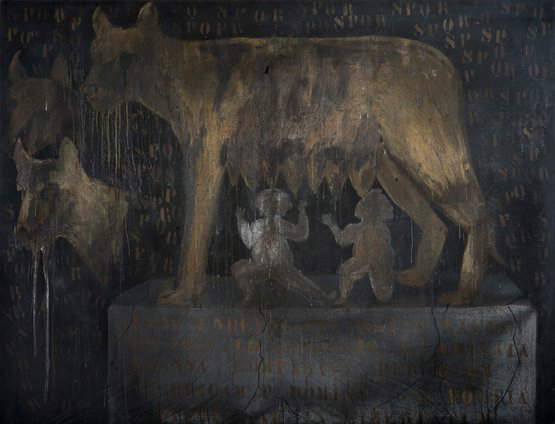


Franco Angeli has produced a very substantial number of works, in which he has used a variety of techniques and materials, including lime, enamel, gauze, and many others, following the path that Alberto Burri had already taken before him. Behind the decision to experiment with different materials was the intention to vent the traumas caused by having experienced the drama of war firsthand.
In this regard, he said, “The material for me is a fragment of this enormous laceration that swept Europe; my first paintings were like that, like a wound from which you remove pieces of bandage [...] where the blood has congealed but is no longer a red stain.” One of Angeli’s earliest works is entitled From a Wound Sprang Beauty, in which he transposed personal memories related to the bombing that occurred on the night of San Lorenzo in 1943.
The later works consist of oil paint brushstrokes spread in veils, interspersed with nylon stockings and gauze. Angeli’s intent is to use these light materials to instill in the viewer the sensation of looking at something impalpable and elusive, akin to a distant memory. Between 1960 and 1961 he produced important works from his oeuvre that explicitly mention episodes from World War II and the Cuban revolution, namely O.A.S. (All Bad Germans) from 1961, the title of which comes from the name of an underground paramilitary organization, Cuba (1960), a direct reference to the embargo imposed by the United States against Cuba following the revolution led by Fidel Castro against the dictatorship of Fulgencio Batista, July 25 (1963), the day of the fall of fascism in 1943.
In some of these works there are often words and writings, especially in O.A.S., in which he inserts some newspaper clippings. The choice had its origin in Angeli’s very close relationship with some exponents of Italian experimental poetry, for example Elio Pagliarani and Nanni Balestrini. Already from 1963-1964 words have even more space in his paintings, until they become essential elements of them, as is evident in Natale di Roma, Stemma pontificio, Artiglio, dated between 1964 and 1965. In 1962, in conjunction with his participation in the exhibition New Perspectives in Italian Painting at the Galleria Comunale d’Arte Moderna in Bologna, several symbols appeared in his works, such as crosses, swastikas, sickle and hammer, clear symbols of totalitarian power.
Beginning in 1964 Angeli began to dot his works with new symbols, this time taken from the everyday view from the urban furniture and ancient ruins of Rome, emphasizing their rhetorical and at the same time celebratory character. These symbols include the Capitoline she-wolf, obelisks, as well as the usual crosses and swastikas. The artist, in this regard, declared, “they are the testimony of daily contact with the street [...] they release enough energy to face the pictorial adventure.” As in his early works, these symbols are also covered by a thin veil, but in this case Angeli connotes them with new nuances and meanings, namely memory, reflection, and detachment.
In 1965, a number of tazebaos first appeared, including Comrades, Berlin 1945, Vietnamese Comrade, Occupation of an Equestrian Monument, and Eternal Embrace, all related to Angeli’s political engagement. The following year, he included the element of the coin in his works, making it a universal symbol despite its nature as a conventional object. He opened a solo exhibition at Rome’s Arco di Alibert gallery devoted precisely to works based on this theme, which he titled Half Dollar. He also gave the same title, America America (Half dollar) to another exhibition, in which he presented, instead, the effigy of the eagle, gilded, large in size, and as is customary veiled. The eagle is a symbol strongly linked to American culture and, not surprisingly, in the various versions produced the raptor stood out against backgrounds in shades of blue, white, and red, colors that are a direct reference to the U.S. flag
In the late 1960s, Angeli began to move into other art forms such as video, photography and visual arts. The first film is dated 1967, entitled Days of Reading, while other later videos are Screens (1968), New York (1969), Viva il Primo Maggio (1968). In March 1968 Angeli presented new works that he constructed from metal plates, arrows, and panels in a new solo exhibition at La Tartaruga Gallery. These works anticipated a later installation, Opprimente, which consisted of a lowered wall and went down in history for being a collectively constructed work, with contributions from major artists contemporary to Angeli including Giosetta Fioroni, Emilio Prini and Paolo Icaro, Pier Paolo Calzolari, Enrico Castellani, Paolo Scheggi, Mario Ceroli, Renato Mambor, Cesare Tacchi, Alighiero Boetti, Fabio Mauri and many others.
The Vietnam War, which broke out in those years, became preponderant in Angeli’s prolific production of the late 1960s. Works on this theme include American University (1967) and Corteo (1968), made with the technique of social reportage, Eurasian Anonymous (1969), Comrades (Giap and Ho chi Min) and Vietcong (1971). In the 1980s, Angeli would return to the Vietnam theme, including in a series of landscapes of airplanes, seemingly playful and charming, but which actually have a destructive function. Also of the same tone are a series of landscapes such as From the Apennines to the And es and Popular Song of the Andes, in reference to Augusto Pinochet’s coup in Chile on September 11, 1973. Regarding these works, Angeli stated, “I thought that one could paint the Chilean tragedy through a landscape made only of colors.”
The Explosions (1986) fit perfectly into the vein of social themes and condemnation of war, in which the landscapes become even more exotic through the presence of pyramids and obelisks, elements of antiquity that blend with the present, thus creating a continuous cycle of endless repetition of events. Shortly before, in 1984, Angeli had introduced one last new symbol, the marionette. Elaborated at an advanced age, this element later turned out to be similar to a self-portrait, foreshadowing the sunset of his own life. In 1986 he then published the volume La Porta rossa (The Red Door), the result of his prolific contact with the Italian neo-avant-garde poets whom he had already been frequenting since the 1960s. The book featured some of his lithographs, 63 in all, which drew from his repertoire, including eagles, symbols of totalitarian regimes, crosses and stars, to which he juxtaposed hearts and polka dots in decidedly bright colors. Among the poets participating in the project was artist Tano Festa, here as a writer.
Angeli had previously produced a number of artist’s books, such as Poema 63, in which he had included symbols that alluded to the ominous consequences of totalitarianism with titles such as German Cemetery, War Cemetery, Algerian Cemetery, and Partisan Cemetery. In November 1964 he had, in addition, published Frammenti capitolini, a catalog of the exhibition of the same name at the Arco d’Alibert Art Studio, which more closely resembled an actual artist’s book. Inside, it alternated effigies and coats of arms of imperial and papal Rome with articles from the penal code relating to vilification against the flag and emblems of the state, places of worship, monuments and archaeological heritage. Franco Angeli continued to exhibit in numerous exhibitions both in Rome and in Italy until his passing.

 Franco Angeli,
Franco Angeli,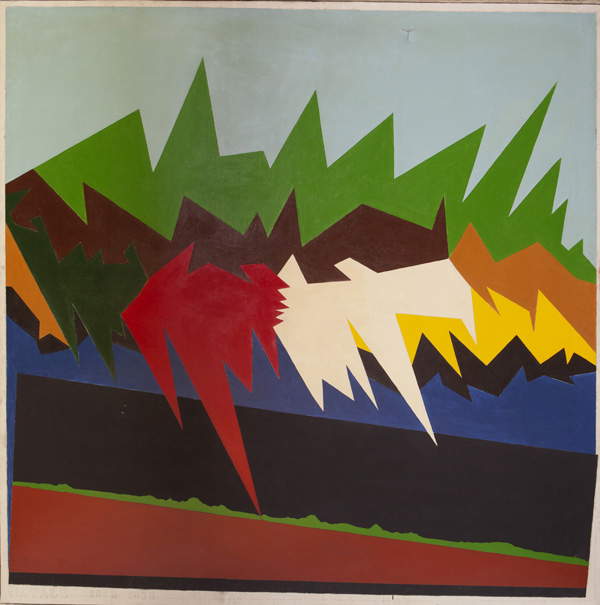
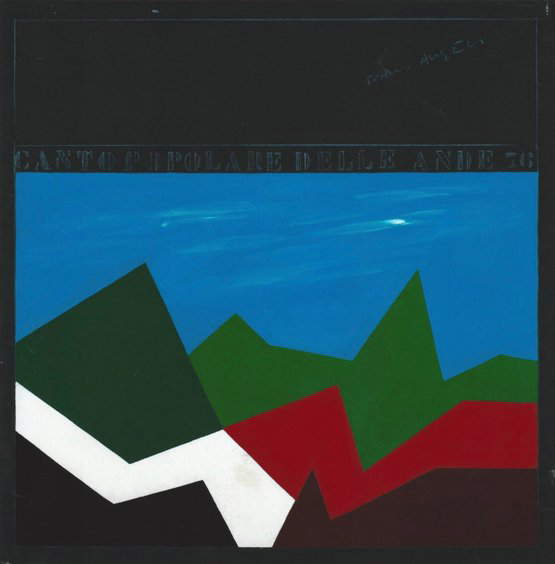
Franco Angeli’s works can be found in Italy, particularly some of them in museums in Rome, the artist’s hometown. At the MACRO - Museum of Contemporary Art in Rome is Head of a Capitoline She-Wolf, 1961-1964, while in the GNAM - National Gallery of Modern and Contemporary Art is kept Algeria (1961).
In the rest of Italy, among others are the works Corteo (1968) at MAMbo - Museo d’Arte Moderna di Bologna. In Milan, at the Arnaldo Pomodoro Foundation, is Untitled (1964), and in Turin, at the GAM Galleria d’Arte Moderna you can see Napoleon (1964). Finally, in October 2009, thanks to the work of Maria Angeli, the artist’s daughter, the Franco Angeli Archive was established, engaged in cataloging all of Angeli’s works.
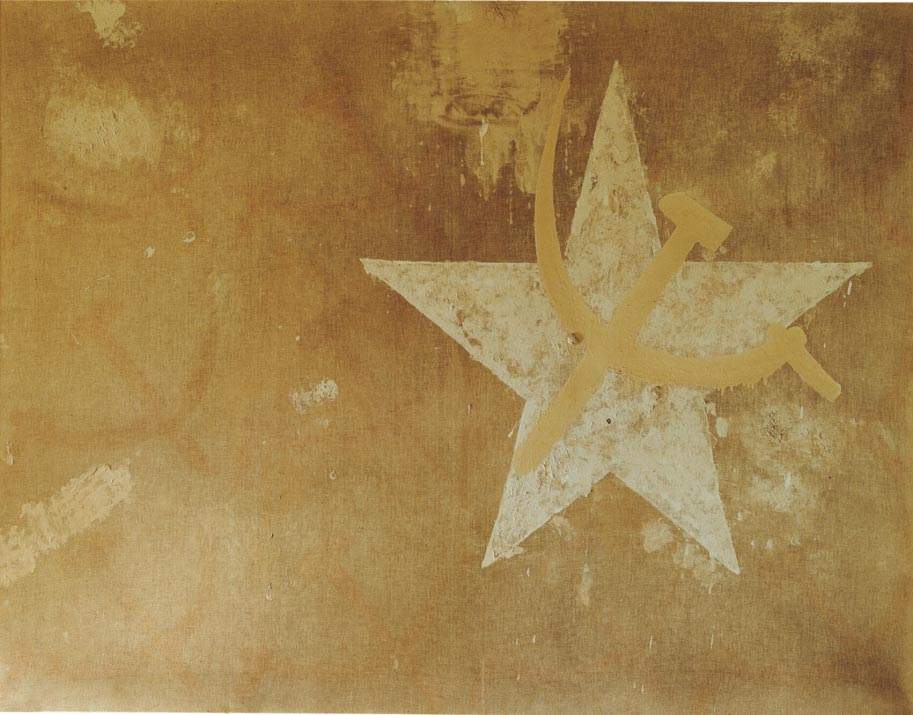 |
| Franco Angeli, the painter of symbols. Life, style, works |
Warning: the translation into English of the original Italian article was created using automatic tools. We undertake to review all articles, but we do not guarantee the total absence of inaccuracies in the translation due to the program. You can find the original by clicking on the ITA button. If you find any mistake,please contact us.